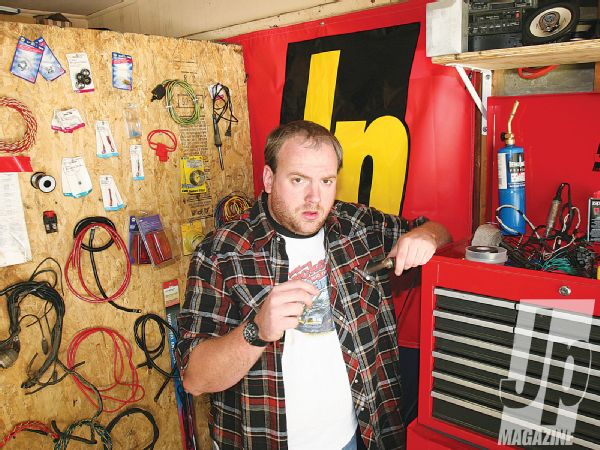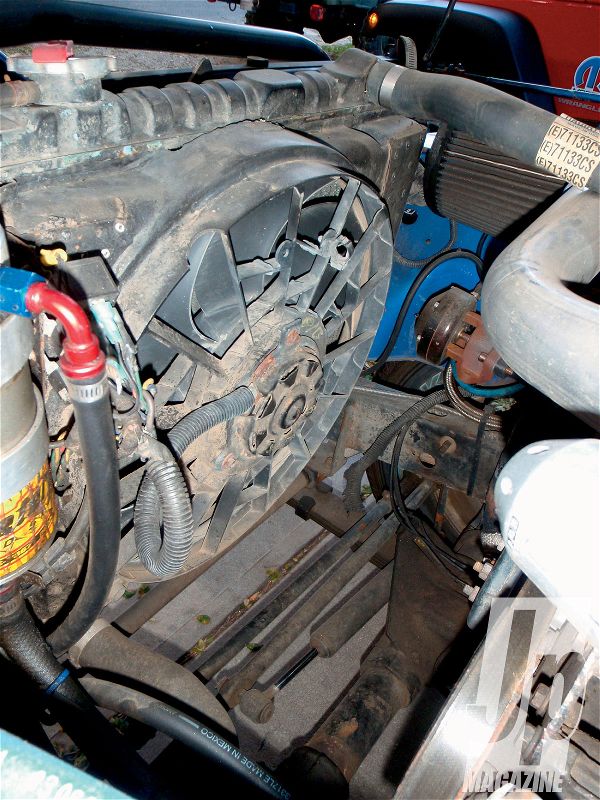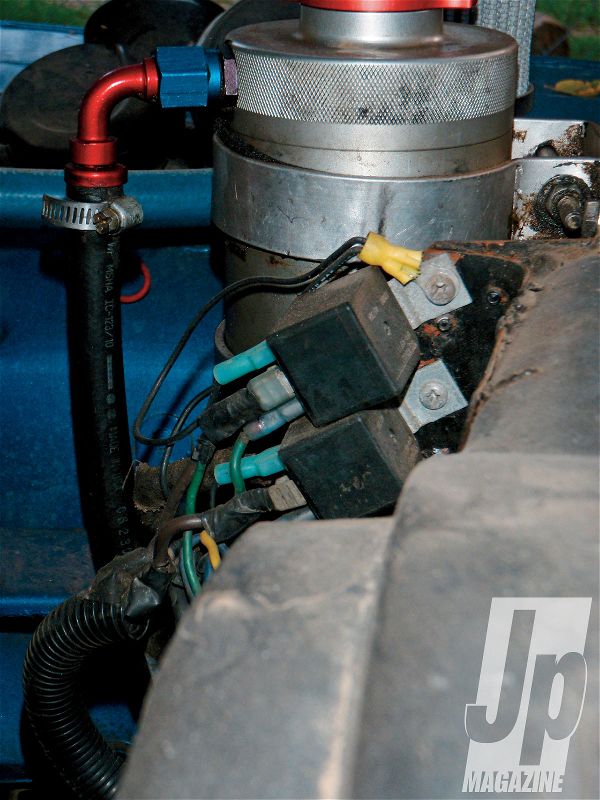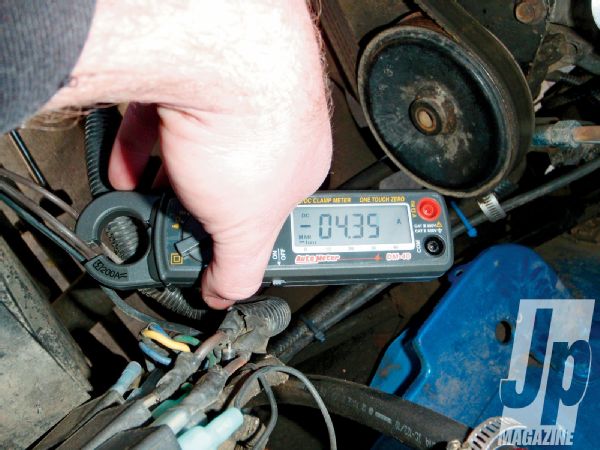
I like the two-speed electric fan out of the Ford Taurus. Where else can you get a fan that is good for around 3,000cfm of air flow for 30 bucks or less? What I don't like about it is all the haters. I am so sick and tired of hearing people talk about needing a 250-amp relay for a Ford Taurus fan to work correctly. If more people would just listen to some of the good advice I write here each month, there wouldn't be any issues. The Taurus fan gets a bad wrap, and I want to fix it.

Sorry, I had to vent. I'm Randy, and most of you by now probably know this column as a place to go to relearn things you've forgotten or have not read before. Or you just come here to laugh at the simple guy trying to explain difficult things. Whatever the case, I guess enough of you are reading this column, so even if you are laughing at me, it gives me a chance to practice my grammar once a month.
Before I started this column, Joy would call me "Dummy" so much that I thought it might be my middle name. She still calls me "Dummy," but now she sometimes calls me "Geek" or "Dumb Nerd." I guess that's because of my astonishing creativity-such as the time I fixed her old Subaru by putting an electric fan in it.
She had been hotwiring the El Camino for a while before Earl finally asked her why she didn't drive her own car. We found out it was overheating, and when we looked at it, the fan wasn't working. I decided to go to the boneyard and pull a two-speed fan from a '90-'95 Ford Taurus with a 3.8L V-6 (8C607). With about 2,400cfm on low and 4,000cfm on high, this fan should work for all stock Jeep and most modified Jeep engines, and worked great for the Subaru. I never found a definite measure for the flow of this fan; these are the numbers I usually go with and the "paper to the grille" comparison with other fans seems to confirm this.
A lot of you Jeep guys have been telling me that the fan works for a while then melts relays, or works for a while and then dies. When we talk electrical parts from a junkyard, your mileage may vary. If the fan dies, either be sure to wire it up correctly, or swap in another motor and keep going.
This fan has been in this Wrangler for about 120,000 miles and over 7 years. It was originally wired up with a custom automatic controller, but that died a muddy death. It is now on a full-manual-style switch wired up to the same two 40-amp relays it has been running off of for the past 7 years. Through both humid northeast summers and brutal southwest deserts, it is still going strong and the high speed setting is rarely needed.

One relay for low speed and one for high is all that is needed. I think that this wiring could be redone, however. So far, this guy has been fairly lucky with the crimp connectors. Get the relay, relay socket, fan connector plug, and wiring out of the Taurus you get the fan from, or use some aftermarket relay sockets that come pre-wired with at least 12-gauge wire and heavy-duty weatherpack connectors. I've seen a lot of these crimp connectors melt down, and they are the real culprit for the relays dying. As the crimp connector gets hotter, the resistance increases, and the amperage draw increases making everything hotter-increasing resistance even more. Well, you get the idea.

I've heard things like the Taurus fan pulls 80 amps on a standing start into the "High" speed. I'm not sure if these guys are even measuring it. That amperage happens for milliseconds, and not only is it hard to measure, but most decent relays and connectors can handle a surge like that. Most regular fans that you can get from the aftermarket suggest a normal 30-amp Bosch relay. That includes 16-inch fans that pull upwards of 2500cfm.
 Amperage Draw
(amps)
Ford Taurus Fan Low
Ford Taurus Fan High
SPAL VA18-
AP71/LL-59A
Cold standing start
6.15
9.95
10.15
Warm standing start
3.14
10.7
11.43
Moving start
2.72
7.42
7.78
Continuous draw cold
1.8
4.29
5.11
Continuous draw warm
4.54
6.55
7.21
Amperage Draw
(amps)
Ford Taurus Fan Low
Ford Taurus Fan High
SPAL VA18-
AP71/LL-59A
Cold standing start
6.15
9.95
10.15
Warm standing start
3.14
10.7
11.43
Moving start
2.72
7.42
7.78
Continuous draw cold
1.8
4.29
5.11
Continuous draw warm
4.54
6.55
7.21
Since I had my Auto Meter DM-40 multimeter handy and access to both a Ford Taurus fan and a 3430cfm SPAL fan, I decided to take some measurements. In theory, starting the fan from stop should take more juice than if it is spinning-and a warm fan should take more to start than a cold fan. The SPAL constantly drew more than the Taurus fan on "High," but it is suggested to wire it up with a regular Bosch relay.